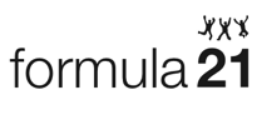
Almost every baby born with T21 will face several common issues. The most critical are oxygen deprivation due to sleep apnea, and hypotonia (low muscle tone). Early and aggressive intervention maximizes a child’s potential by combatting the challenges presented by the condition. Designed as a day-one document, formula21 helps families first understand what are the basic issues they need to overcome, and how to tackle them. Each of the identified issues and their related therapies can be woven into daily routines, playtime and normal loving time spent as with any baby.
Sleep apnea is not common in typical children but has an alarmingly high rate of occurrence in babies with T21. Studies conducted by Professor Sally Shott, MD report a 50-100% incidence of this problem in overall age ranges and detection as early as within the first few months of life. Parents and carers absolutely must ask their pediatricians for early testing and continue throughout childhood and adulthood. It is extremely difficult if at all possible for parents to detect obstructive sleep apnea at home. Snoring may or may not present as a symptom due to a variety of predisposed factors from anatomic variances, and smaller airway sizes are a predominant contributor overall. The good news is once detected, the source of the sleep obstruction can be addressed, the most common being tonsil or adenoid adjustment. To reduce contributing factors directly due to global low tone, oral motor, occupational and physical therapies early are definitely pivotal. In summary early detection through an overnight sleep apnea test and continued testing is key.
Hypotonia manifests in several ways ranging from sensory deficit, to gross motor and fine motor control. The body's most heavily concentrated zone for fine motor skills is in the mouth, therefore addressing oral motor skills development early is equally important. Sensory deficiency is addressed through proprioceptor stimulation, massage and skin surface wake-up. Occupational and physical therapists can provide parents and carers with integrated exercises and techniques with sleeping eating bathing and play routines, that can be easy and fun.
formula21 lists five basic components, very common in almost every baby born with T21.
formula21 includes five components:
1. Oxygen Loss
2. Hypotonia
3. Oral Motors Skills
4. Sensory Wake Up
5. Nutrition